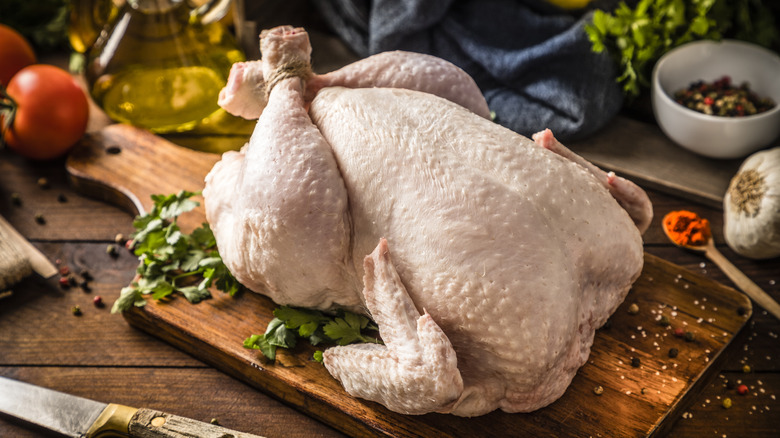What Exactly Does Room Temperature Mean In Cooking?
Many recipes — and cooking tips — call for ingredients to be brought to room temperature before cooking. But room temperature can be very different from season to season and even from kitchen to kitchen. So what exactly is room temperature? In general, 70 degrees Fahrenheit is a good target, though a few degrees more or less is usually fine. For recipe testing, America's Test Kitchen uses 67 degrees Fahrenheit as its guide. And for baking, certain doughs need slightly higher temperatures to ferment and rise properly, ensuring the best texture. So, while the exact temperature might vary, keeping your ingredients within the recommended range will help you achieve the best outcomes in your kitchen.
Room temperature ingredients are essential for even cooking. For instance, bringing meat to room temperature before roasting helps it cook more uniformly, preventing the outside from overcooking while the inside remains underdone. Room temperature ingredients also help ensure your heated pan doesn't cool too much when items are added, keeping cooking temperatures consistent. In baking, fridge-cold eggs and butter can disrupt the mixing process, leading to uneven textures in doughs and batters. Cold liquids can also inhibit yeast activity, slowing fermentation and affecting the final rise. Additionally, temperature plays a role in emulsifying, as colder liquids are harder to blend smoothly, ultimately impacting both texture and structure. It's a good idea to plan ahead to let ingredients come to room temperature naturally, but there are also a few tricks to speed up the process when needed.
Safely achieving room temperature
When bringing your ingredients to room temperature, safety is crucial. According to USDA guidelines, perishable foods should not be left out of the fridge for more than two hours — and only one hour if the temperature is above 90 degrees Fahrenheit. To be extra cautious, it's best to leave meat out of the fridge for no more than one hour, especially if the ambient temp is higher than 72 degrees Fahrenheit. Butter, on the other hand, is safe at room temperature for one or two days. If you're working with room temperature eggs for baking — like when making chocolate chip cookies, where it really makes a difference — just be sure to follow that same two-hour rule.
If you're pressed for time and need to speed up the process, there are a few handy tricks to bring ingredients to room temperature more quickly. Eggs can be placed in a bowl of warm tap water for a few minutes to gently warm them up. For butter, you can either grate it or place it under an inverted bowl that has been heated by boiling water. For liquids like milk or cream, heating them in the microwave for 15 seconds at a time is a simple way to warm them without overheating. No matter which method you use to bring your ingredients to room temperature, be sure to do so safely by keeping food safety guidelines in mind.

